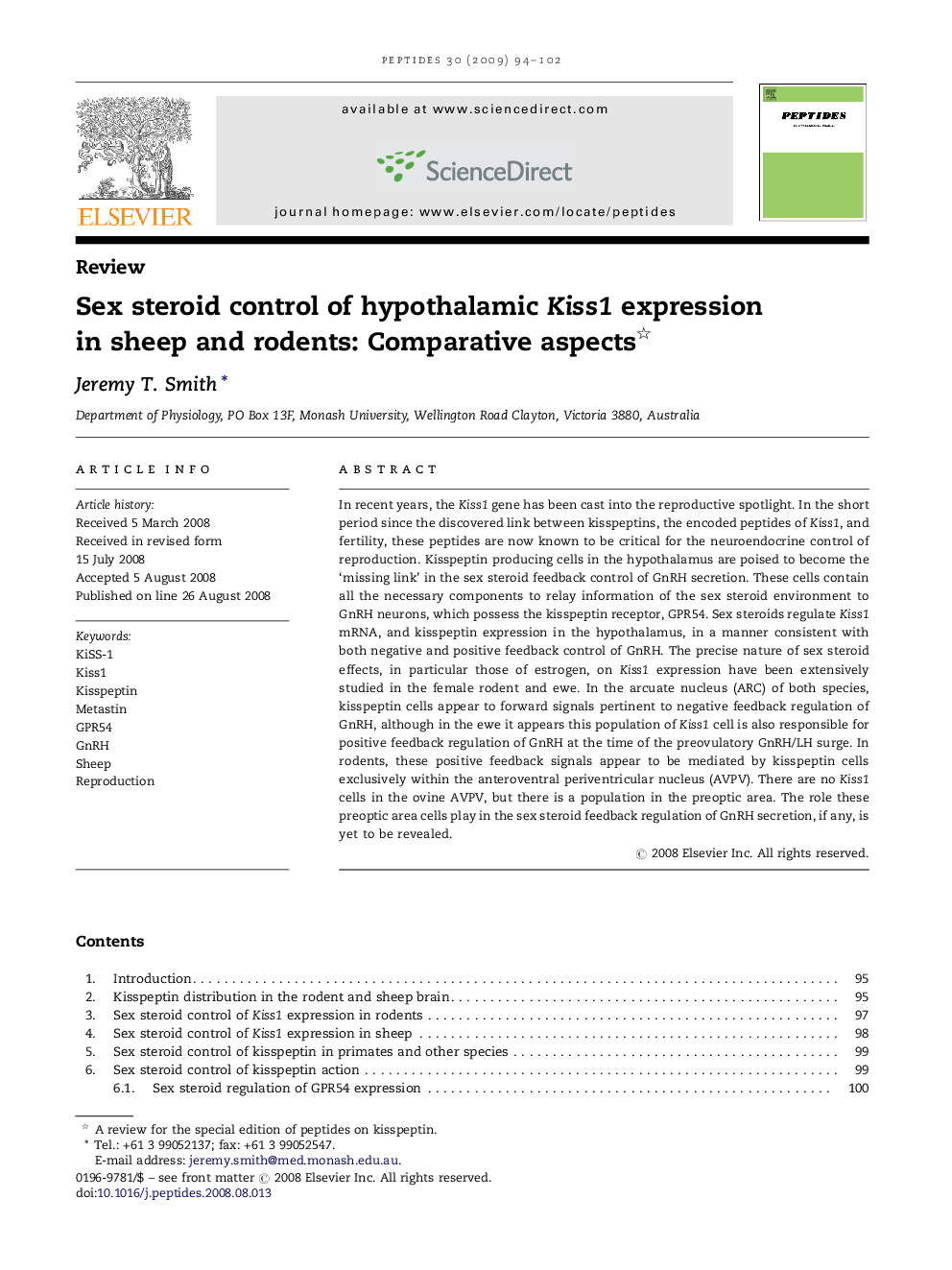| Article ID | Journal | Published Year | Pages | File Type |
|---|---|---|---|---|
| 2007927 | Peptides | 2009 | 9 Pages |
In recent years, the Kiss1 gene has been cast into the reproductive spotlight. In the short period since the discovered link between kisspeptins, the encoded peptides of Kiss1, and fertility, these peptides are now known to be critical for the neuroendocrine control of reproduction. Kisspeptin producing cells in the hypothalamus are poised to become the ‘missing link’ in the sex steroid feedback control of GnRH secretion. These cells contain all the necessary components to relay information of the sex steroid environment to GnRH neurons, which possess the kisspeptin receptor, GPR54. Sex steroids regulate Kiss1 mRNA, and kisspeptin expression in the hypothalamus, in a manner consistent with both negative and positive feedback control of GnRH. The precise nature of sex steroid effects, in particular those of estrogen, on Kiss1 expression have been extensively studied in the female rodent and ewe. In the arcuate nucleus (ARC) of both species, kisspeptin cells appear to forward signals pertinent to negative feedback regulation of GnRH, although in the ewe it appears this population of Kiss1 cell is also responsible for positive feedback regulation of GnRH at the time of the preovulatory GnRH/LH surge. In rodents, these positive feedback signals appear to be mediated by kisspeptin cells exclusively within the anteroventral periventricular nucleus (AVPV). There are no Kiss1 cells in the ovine AVPV, but there is a population in the preoptic area. The role these preoptic area cells play in the sex steroid feedback regulation of GnRH secretion, if any, is yet to be revealed.
